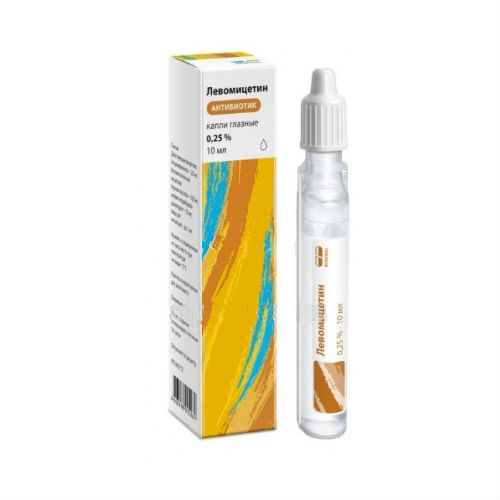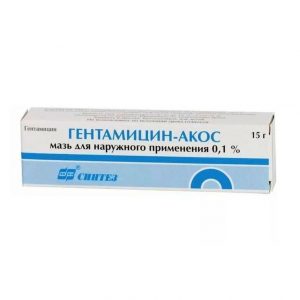Description
Pharmacological action
Chloramphenicol is a broad-spectrum antibiotic effective against many gram-positive cocci (gonococci and meningococci), various bacteria (Escherichia coli and Haemophilus influenzae, Salmonella, Shigella, Klebsiella, Serration, Yersbnii, Proteus), Rickettsia, Spirochetes and some large viruses.
The drug is active against strains resistant to penicillin, streptomycin, sulfonamides.
Poorly active against acid-resistant bacteria, Pseudomonas aeruginosa, clostridia and protozoa.
Acts bacteriostatically. The mechanism of antibacterial action is associated with a violation of the synthesis of proteins of microorganisms.
Drug resistance to the drug develops relatively slowly, while, as a rule, cross-resistance to other chemotherapeutic agents does not occur.
Indications
Prevention and treatment of infectious diseases of the eye:
conjunctivitis
blepharitis
keratitis.
Contraindications
hemopoiesis inhibition
skin diseases (psoriasis, eczema, fungal diseases)
pregnancy
newborn children
idiosyncrasy to the drug.
Composition
1 ml contains:
chloramphenicol – 2.5 mg.
Excipients:
boric acid.
Dosage and administration
The drug is instilled in the conjunctival sac, 1 drop 3-4 times / day.
If the patient takes the drug at his discretion, then it is not recommended to use more than three days without consulting a doctor.
Side effects
Allergic reactions may develop.
Drug interactions
To prevent the strengthening of the inhibitory effect on hematopoiesis, the combined use with sulfonamide drugs is not recommended.
Storage conditions
Store in a dark place, out of the reach of children, at a temperature not exceeding 30 ° C.
active substance
Chloramphenicol
Dispensing conditions from
pharmacies Prescription
dosage form
eye drops


